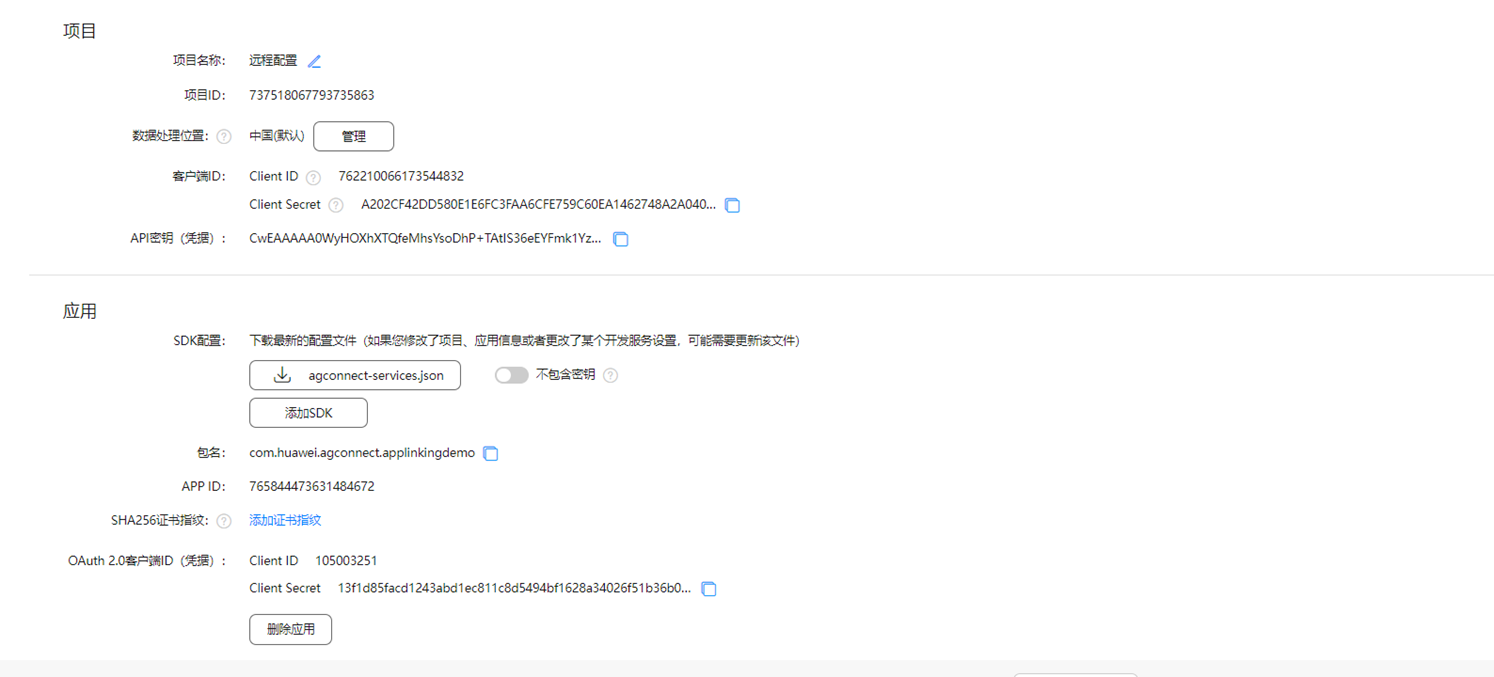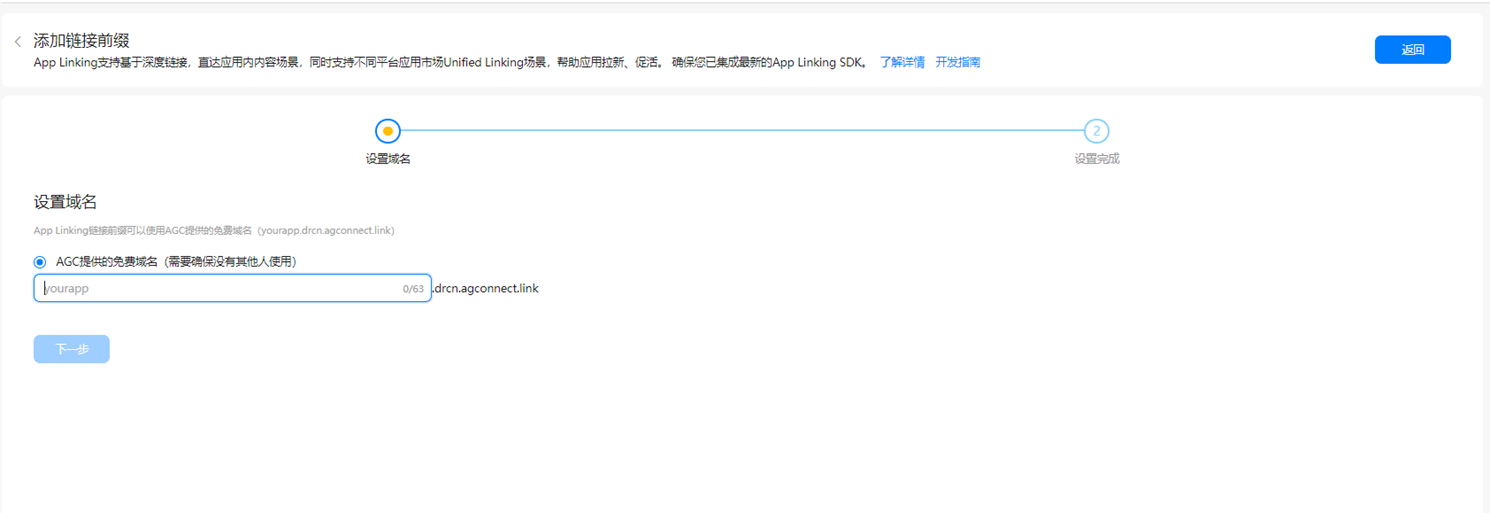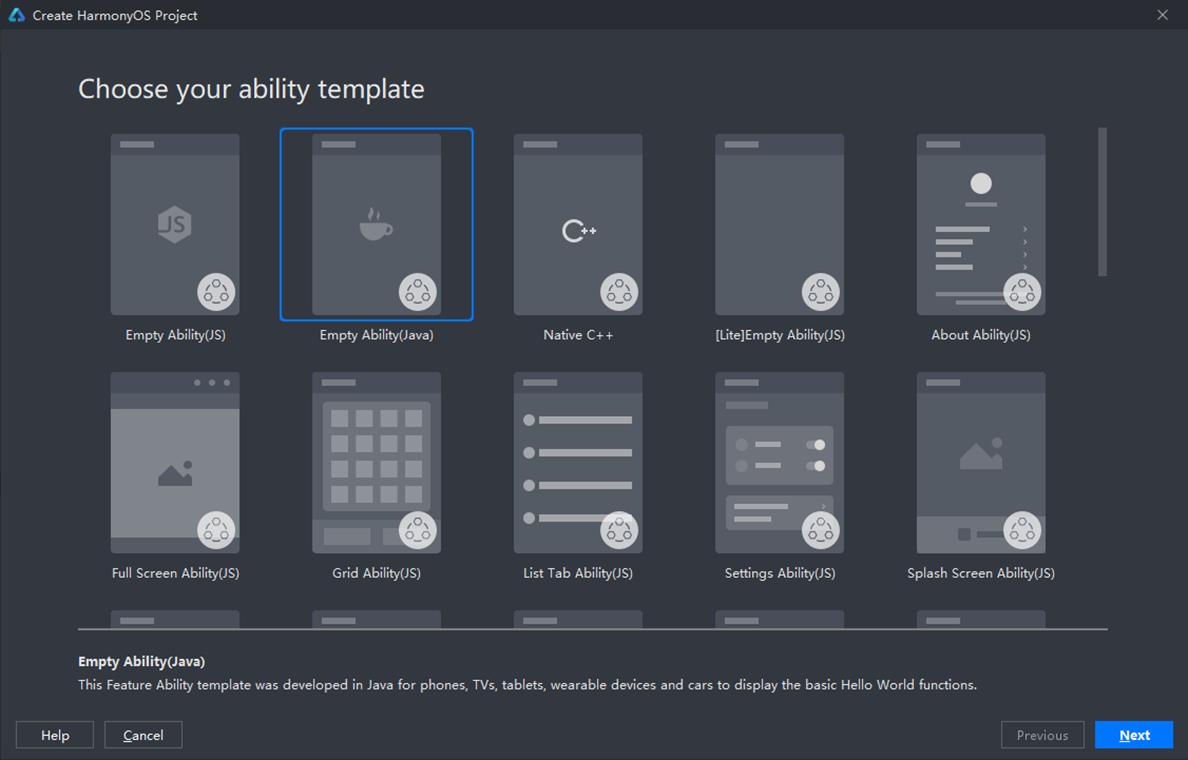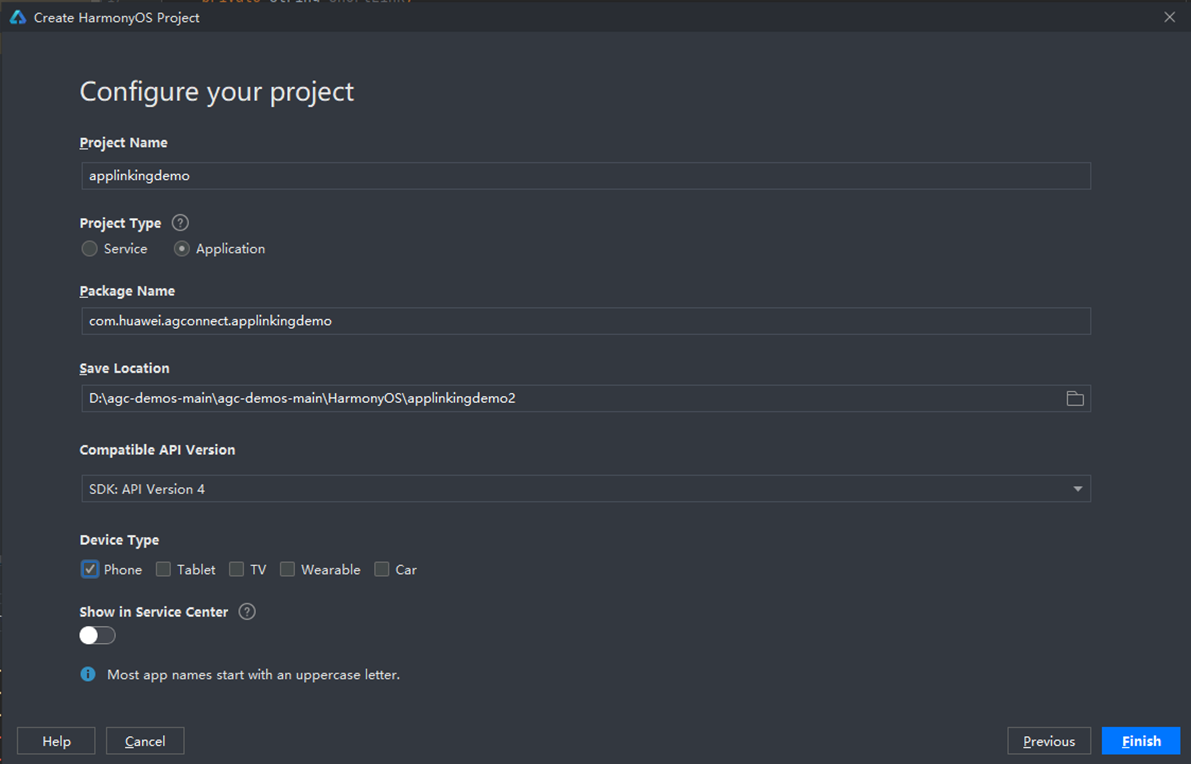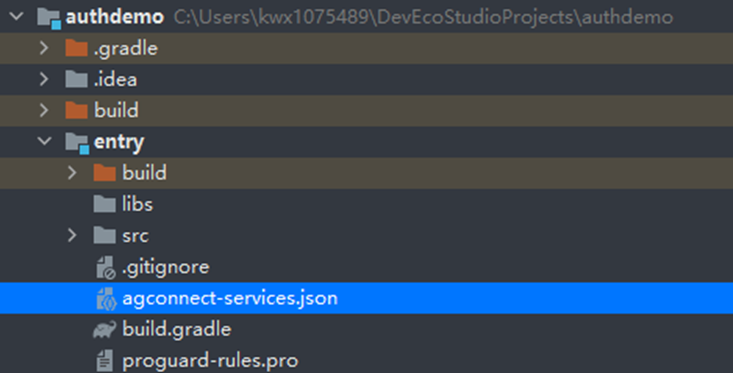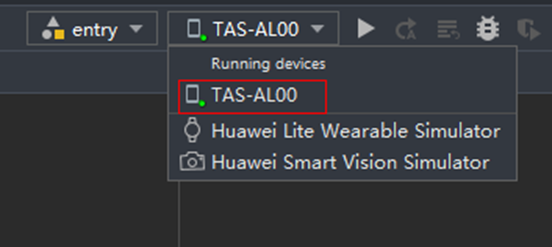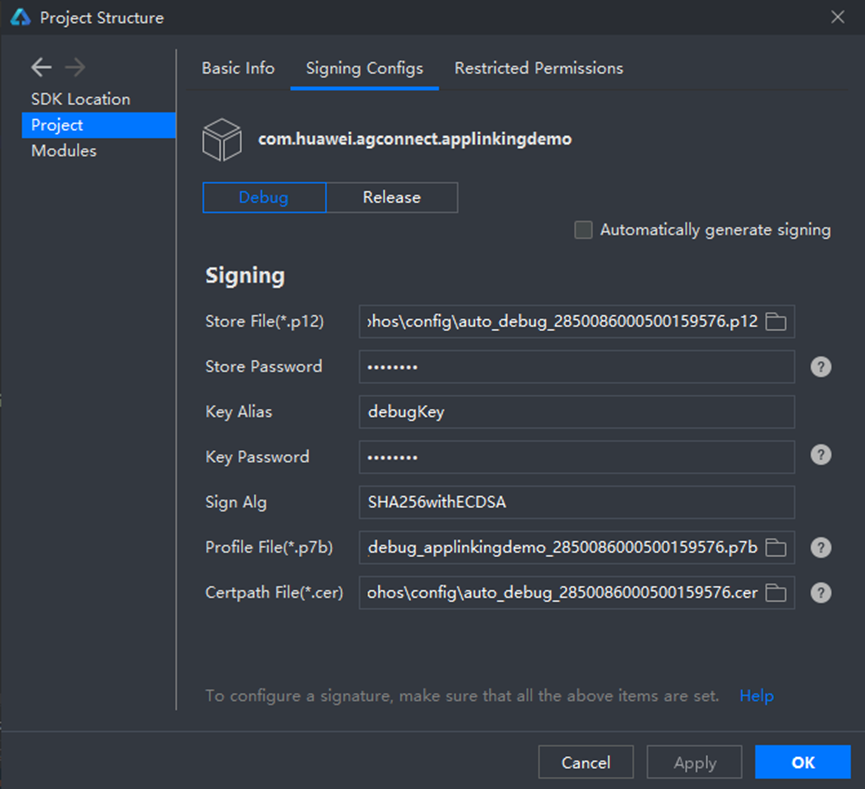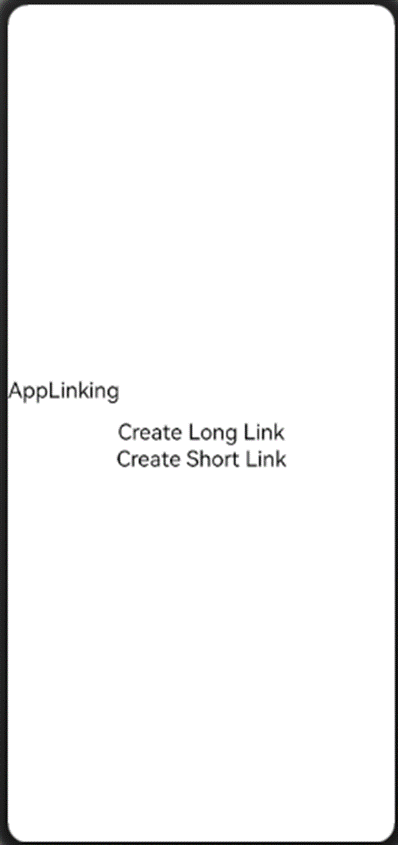快速集成AppLinking服务-HarmonyOS平台
App Linking是一种支持Android、iOS、HarmonyOS、Web等多种平台的跳转链接,无论用户是否已经安装您的应用,App Linking都能够按照您指定的方式进行跳转。用户在Android、iOS或HarmonyOS设备上点击App Linking后,即可跳转到链接指定的内容。用户在PC端浏览器中打开相同的链接地址,也可以跳转到网站上的同等内容。
集成内容
通过HarmonyOS sdk插件集成AppLinking服务,在AGC控制台开启服务,添加一个链接前缀,同时端侧集成SDK调用生成长链接和短链接,分享链接至浏览器,展示分享的内容。
集成准备
1、安装DevEco Studio开发工具,并熟悉HarmonyOS应用的开发流程。
2、AGC创建工程并开通服务
a)在AGC创建HarmonyOS应用并开通验证服务。
b)添加链接前缀
3、DevEco Studio中创建HarmonyOS工程
a)打开IDE工具,选择File-New-New project,选择Java语言编译模板后,点击Next进入创建工程配置界面。
注意选择应用(Application),包名和AGC创建的应用包名相同。
b)将agconnect-services.json文件拷贝到项目的entry模块的目录下
c)配置Maven仓地址和AGC插件地址。
打开DevEco Studio项目级build.gradle文件。
在allprojects ->repositories里面配置maven仓地址。
在buildscript->repositories中配置maven仓地址。
在buildscript->dependencies中配置AppGallery Connect插件地址。
测试环境需要配置内部私仓地址,正式环境需要配置外部正式仓。
d)添加编译依赖和集成SDK。
打开HarmonyOS项目应用级(entry)的build.gradle文件,添加插件地址。
在“dependencies”中添加添加agconnect-core的编译依赖和AppLinking SDK。
e)entry (hap)模块添加配置信息
enrty模块的config.json文件的module/abilities中,加入如下配置,注意包名的替换。
f)同步工程配置。
4、配置签名信息。
Harmony应用安装到真机进行测试,需要配置签名信息,有手动签名和自动签名两种方式,具体可以参见:配置签名信息。建议优先使用自动签名方式,如自动签名失败,可以选择手动签名方式。这里使用自动签名方式:
a)连接真机设备,确保DevEco Studio与真机设备已连接,真机连接成功后如下图所示
b)进入File > Project Structure > Project > Signing Configs界面,点击“Sign In”按钮进行登录,选择Debug,勾选Automatically generate signing,点击try again即可自动进行签名。自动生成签名所需的密钥(.p12)、数字证书(.cer)和Profile文件(.p7b)会存放到用户user目录下的.ohos\config目录下。
设置完签名信息后,点击OK进行保存,然后可以在工程下的build.gradle中查看签名的配置信息。
登录AGC,进入“用户与访问”-“证书管理”,点击新增证书,上传前面生成的.csr文件,类型选择调试证书。
完成签名配置后即可点击安装应用到调试设备。
功能实现
布局设计
参考如上设置布局,一个Text,两个Button,按钮“Creat Long Link”用来创建长链接,按钮“Creat Short Link”用来创建短链接,布局代码如下:
创建链接
1、在onStart方法定义相关界面元素:
2、初始化App Linking对象实例:
3、创建App Linking:
接收链接
接收AppLinking:
1、在Ability里面的skills添加对应的内容
2、配置接收的代码:
功能测试
完成上述配置以后,即可点击运行进行测试。复制链接至浏览器可以正确拉起HarmonyOS应用。
欲了解更多更全技术文章,欢迎访问https://developer.huawei.com/consumer/cn/forum/?ha_source=zzh

